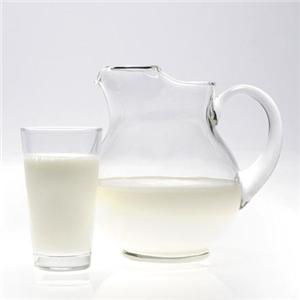Against the backdrop of falling milk production in a number of countries, Belarus demonstrates steady growth
November 30, MINSK. Against the backdrop of a decline in MILK production in a number of countries, Belarus demonstrates steady growth. This was stated by Deputy HEAD of the Main Department of the Processing Industry of the Ministry of Agriculture and Food Maria Klimova in the project "In Fact: Decisions of the First" on the BelTA YouTube channel.
"The dairy industry of our republic has entered the most active phase of development. it is in demand on the world markets," the specialist emphasized. She is convinced that the achievements of the domestic dairy industry are a direct consequence of the well-thought-out, purposeful policy of the state over the past two decades. "All the activities that were laid down in the state programs, which were taken responsibly at all levels, in the Ministry of Agriculture and Food and regional executive committees, gave the result of today," Maria Klimova stressed. And even against the background of the predicted global decline in agricultural production, Belarus, on the contrary, is increasing both production and EXPORT potential.
Maria Klimova recalled how, back in the early 2000s, a program for the revival and development of the countryside began to operate, which helped to secure personnel and producers in the countryside. "This is the development of the raw material base, in general, the production potential of the agro-industrial complex, which laid the foundation for the development of the food industry, including the dairy industry," the specialist added.
Further, republican and sectoral programs for the development of the dairy industry were formed, which provided for the modernization and technical re-equipment of enterprises. “At that time, everyone realized the importance of dairy products, their high profitability, profitability from export sales. The old factories, which at that moment could not fit any standards, quality systems, they were successfully modernized,” recalled Maria Klimova. - Today, the dairy industry, factories are automated modern enterprises with a high production culture, when all technological processes are closed. Enterprises today produce products that are in demand in many countries."
Changes in the standard for the purchase of harvested milk made it possible to improve the quality and range of dairy products. So, since 2015, they have gone from the procurement of second-grade milk, they have introduced an extra grade.
In 2018, a strategy for the development of the dairy industry was adopted, in which, in addition to the qualitative indicators of the development of the raw material base, considerable attention was paid to the optimization of domestic enterprises. "When small enterprises that are no longer able to compete on the world dairy market with Danone, Nestle, and so on, were attached to larger, powerful enterprises. Conditions were created conducive to optimization, efficient processing of raw materials. When there was specialization, the concentration of production was developed optimal structure," a representative of the Ministry of Agriculture and Food said.
According to her, this year the strategy for the development of the dairy industry until 2025 has been updated, and the corresponding action plan for 2022-2025 has been approved. It defines six main areas, the most important of which is the development of the raw material base. "The raw material base will be developed - the factories will be provided with milk, high-quality raw materials, our export and receipt of proceeds will be ensured," Maria Klimova added.
“This year, many countries, especially in Western Europe, have reduced milk production,” she continued. “We, Japan, RUSSIA and Argentina have increased milk production. We have a positive trend. In the EU countries, in the usa , New Zealand, milk production 8 months shows a fall, in New Zealand - by 5%".
As the main reason, the specialist named the unverified strategic policy of the leadership of these countries - the measures they took against other countries eventually affected themselves. In conditions when there is no supply of energy resources, fertilizers, feed, food security is under threat, the implementation of agricultural production in the right time and in the right volumes. “When making decisions against some other country, you need to understand how you yourself depend on it,” Maria Klimova emphasized. “It can go not only to the West, but also to the East. Therefore, I think it is necessary, of course "Take advantage of the situation that a number of countries have reduced milk production, trade from these countries will be reduced. This provides an incentive and good opportunities for domestic dairy producers."
The same applies to a number of European countries. If in general in the European Union the level of self-sufficiency in milk is 116%, then in a number of individual countries it has already decreased - it has fallen by 3 percentage points over the year. "And what will happen next? Experts believe that everything will get worse, there will be a recession. The recession is not only for the dairy complex in Western Europe, but for the entire agro-industrial complex," the specialist said. Nevertheless, the EU countries maintain barriers to the supply of Belarusian milk to their market. A customs tariff is set for Belarusian products there, which makes prices uncompetitive compared to European ones.

